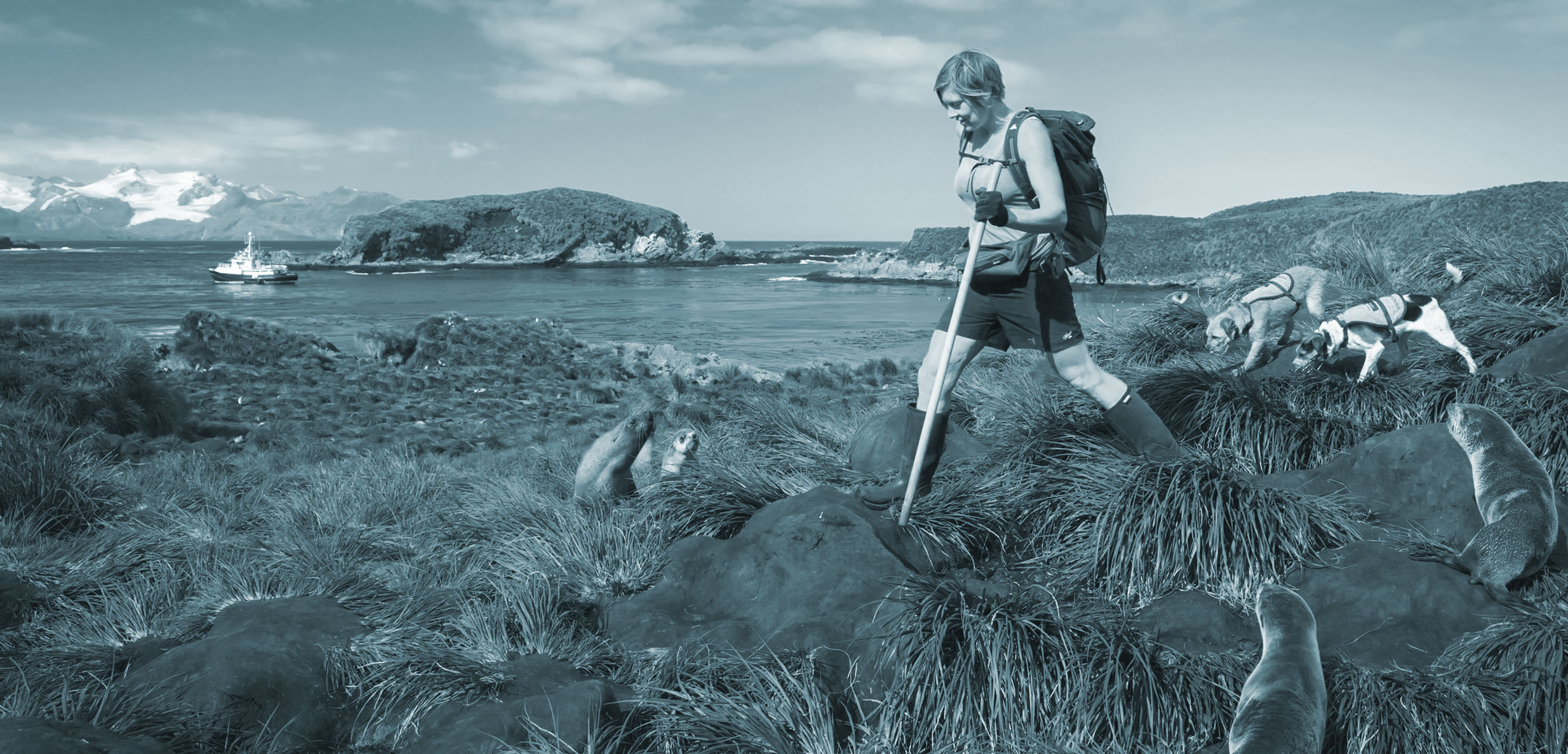Coastal Job: Island Pest Detector
Miriam Ritchie and her troop of terriers help battle invasive species on New Zealand’s small coastal islands.
Article body copy
Some people work in cubicles, others work in kitchens, but the most intriguing workplace of all may be the coast. Meet the people who head to the ocean instead of the office in our Coastal Jobs series.
In her work with New Zealand’s Department of Conservation based in the Northland region, Miriam Ritchie employs one of humanity’s most sophisticated tools for managing invasive pests on remote islands: dogs.
In New Zealand, our bird species evolved with no mammalian predators so have no defenses. Since humans came, bringing invasive pests, we’ve had mass extinctions. Today we have a handful of bird species that just can’t survive on the mainland. The islands are refuges, but pests that get in can be devastating.
My job is to walk around an island with one or two of my three dogs looking for rats, mice, stoats, weasels, ferrets. We come two breeding seasons after a baiting operation, where poison pellets are deployed to kill the invaders. We use dogs for proving that an eradication was successful, among other tasks. I love it, being away from the rest of the world on a mission with my dogs.
For mammalian pests we primarily use fox-border terrier crosses. Terriers are tenacious, relatively small, hardy, and good-natured. They have an obsessive tendency, which is good for us. If they find a target, they show where it is by scratching or whining. Dogs are target-specific, meaning we specifically train each one to find either rodents (in New Zealand that’s rats and mice) or mustelids (stoats, ferrets, and weasels).
The islands are anywhere from 1,200 meters to 1,000 kilometers offshore. Me and my dogs get dropped off by boat or helicopter and usually stay a number of days. Climbing off the front of a boat is often the trickiest part. Slip and you can fall between the boat and a rock. There’s a lot of rock-hopping and gulls dive-bombing you.
Physically, the islands really vary. Usually there are gnarly, cliffy areas. The dogs and I have to be sure-footed, unafraid of heights.
Last year on South Georgia, in the Southern Ocean, where we joined an international team for the world’s largest eradication program ever, there were aggressive seals everywhere along the shore. To get anywhere you had to go right through them. They chased us every day. We had to carry wooden sticks and, if they came too close, pointed at them or touched their noses so they’d back off. In one week three of us got bitten by yearlings. I was bitten behind the knee. They’ve got sharp little teeth, like a dog. The doctor sponged the wound out.
One of my dogs fell backward off a cliff, 10 meters or so, onto a rock. It was on an island overrun with rats. The dog, Moss, was so excited he didn’t realize where he was. I thought he was a goner. Once he got his breath back, he ran straight back up to the rats.
One of our biggest victories was on Portland Island, off the Mahia Peninsula on the east coast of New Zealand’s North Island. It has the largest breeding ground for shore plovers, a rare and fragile bird. They went from around 40 breeding pairs down to eight individuals. It wasn’t clear what the predator was. Other dog handlers had already looked for rats, stoats, and cats.
I got sent over with Moss. The island is plagued by mice, but we were looking for rats. For four days we scoured the island. He dug up mice everywhere and I had to acknowledge and honor each find—tell him he’s a good boy and whatnot—because he has to find mice on other trips. It was slow-going.
Finally, Moss found a rat burrow and a stash of bird bodies. We’d discovered what had decimated the population. It was just one rat, but if something disturbs the birds, they flee to the mainland where they get gobbled up by other things. With that knowledge, we deployed more appropriate traps and now the birds are back to good numbers.
When Moss got back, he was so exhausted because of all the mice. He barely moved for a whole day. Often after working the dogs get super hot, so I’ll take their muzzles and jackets off and give them a good swim. They love chasing sticks or rocks thrown into water.

